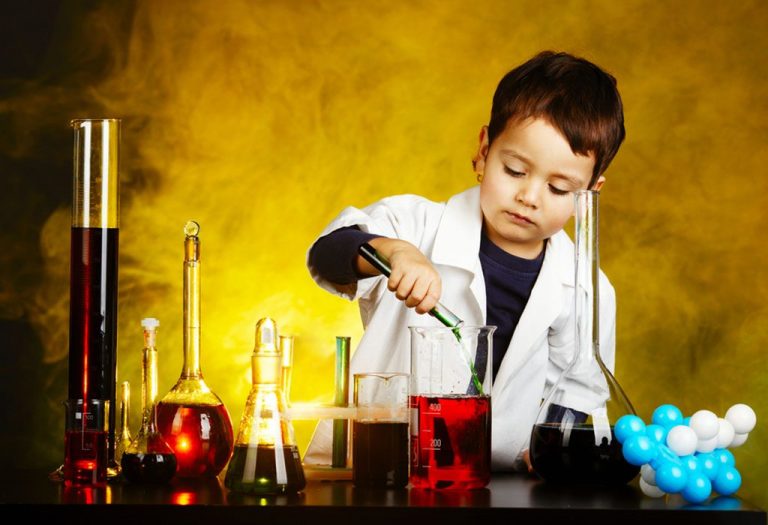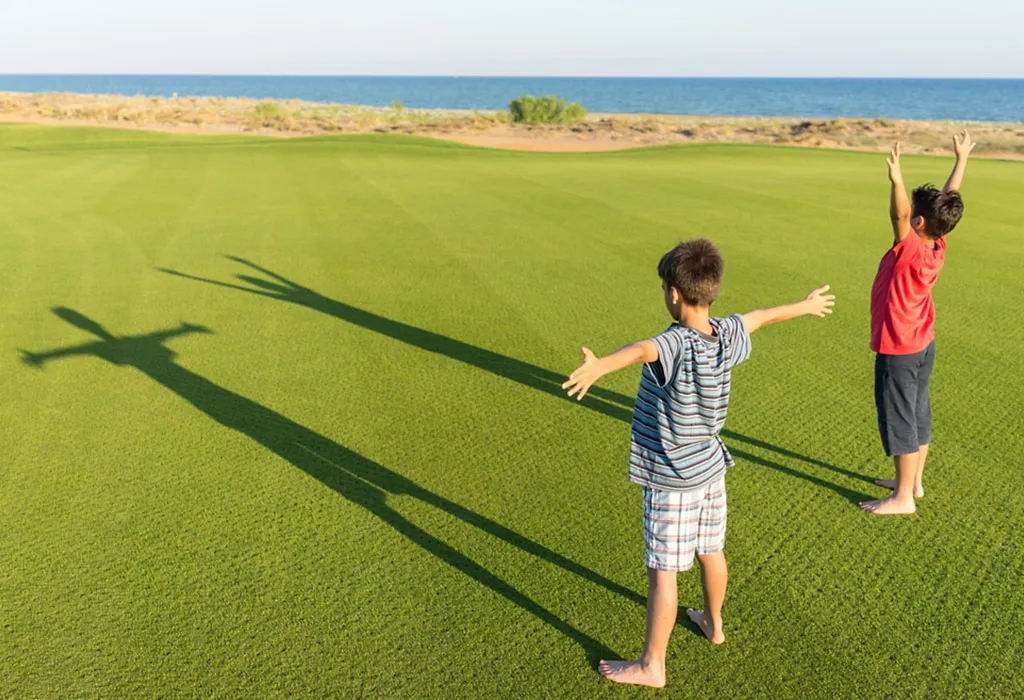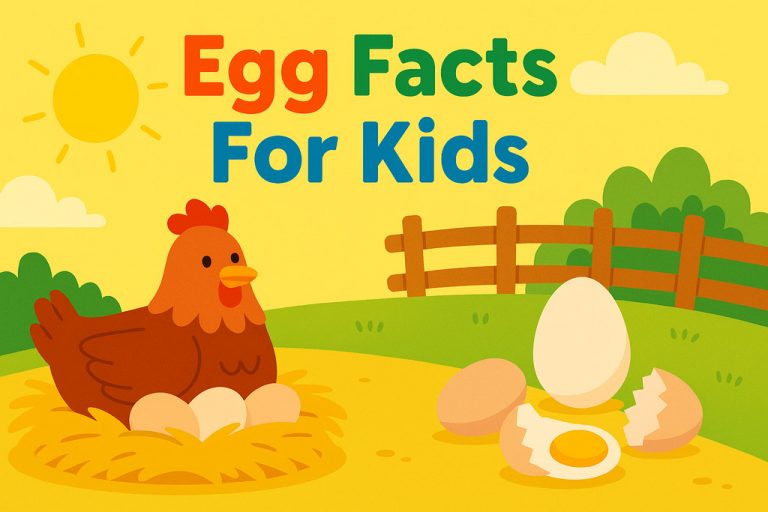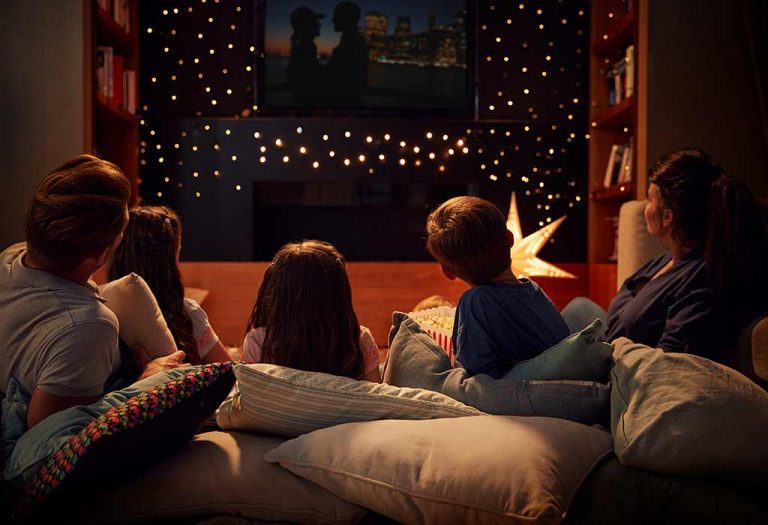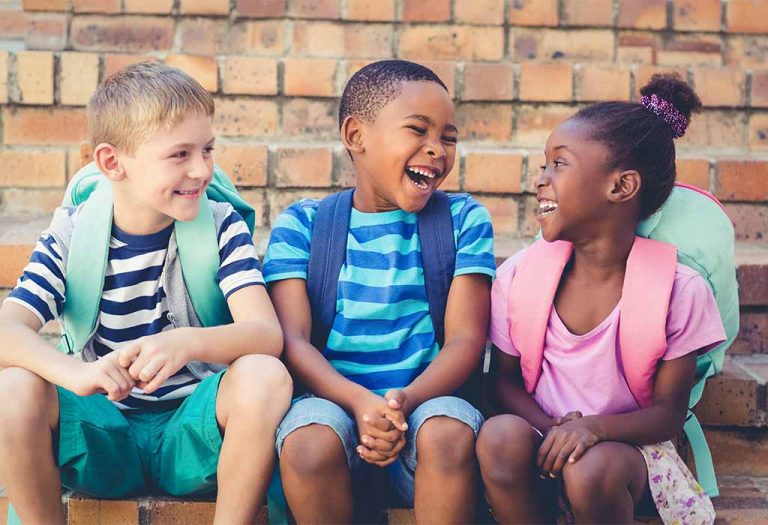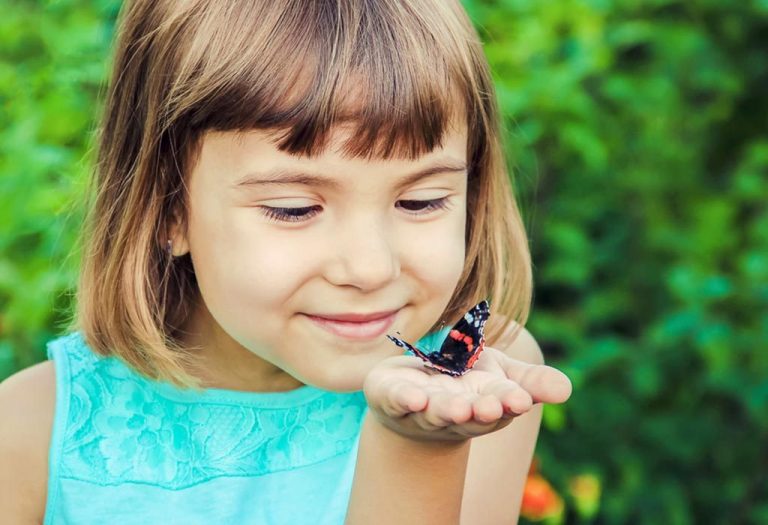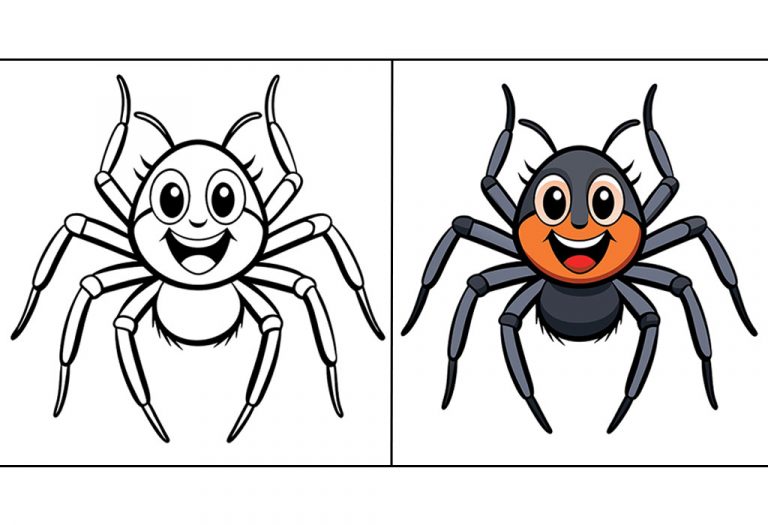30 Easy to Do Science Experiments for Kids
Your child is at an age when the world around them seems exciting and full of endless curiosity. This is the perfect time to engage your kindergarteners with hands-on activities that introduce them to the wonders of science. At this stage, their minds are like sponges, ready to soak up knowledge while having fun. By incorporating simple experiments, you can spark a lifelong interest in exploring how the world works. Here are a couple of easy kindergarten science experiments for your kids that will not only entertain them but also inspire a love for discovery and learning.
Amazing Benefits of Science Experiments for Kids
Introducing fun science experiments to kids is not only fun but also a powerful way to stimulate their curiosity and critical thinking. Here are some amazing benefits of science experiments for kids:
1. Encourages Curiosity
Science experiments inspire kids to ask questions and explore the world around them. This natural curiosity lays the groundwork for future learning and encourages them to discover topics they find interesting. As they engage in scientific activities, they become more eager to find answers and understand how things work.
2. Enhances Problem-Solving Skills
When kids do experiments, they learn to make guesses, test their ideas, and solve problems. This not only improves their logical thinking but also helps them approach challenges with a positive attitude. These problem-solving skills are valuable as they face different situations in school and everyday life.
3. Promotes Hands-On Learning
Children learn best through hands-on activities, and at-home science experiments for kindergarteners offer a fun way to get involved. By doing experiments, kids can see how theories work in real life, making complex ideas easier to grasp. This active involvement fosters a love for learning as they discover new things through exploration.
4. Improves Focus and Patience
Science experiments require kids to pay attention to steps and wait for results, teaching them focus and patience. Learning to concentrate on tasks can help improve their performance in school and other activities. This patience also shows them that not all results come quickly, reinforcing the value of perseverance.
5. Boosts Creativity
Science experiments encourage kids to think creatively and come up with different ideas. This freedom to experiment helps them develop innovative solutions to problems. When children mix creativity with science, they gain a deeper understanding of both fields.
6. Strengthens Fine Motor Skills
Activities like measuring, mixing, and using tools in experiments help kids improve their fine motor skills, which are important for writing and other tasks. These activities enhance hand-eye coordination and dexterity, which are essential for their growth. Developing these skills early on lays a strong foundation for more complex tasks as they get older.
Simple Science Experiment for Preschoolers
These cool kindergarten science experiment ideas can be done indoors and outdoors and will assimilate fine motor and observational skills in kids. Try these out at home and outside, too.
1. Sink and Float
Sink and float is a fun science game where you take a sheet of paper and label two columns as sink and float, respectively. You then tell your child to collect a couple of household and simple outdoor objects and try placing them one at a time in a big bowl or pan of water to see whether they sink or float.
The science behind this is that heavy objects sink while light objects float. Your kids will love it.
2. Invisible Drawing
Tell your kid to take a pan of water and mix in a few drops of dishwashing detergent. Get them a cotton swab and encourage them to draw or write their favorite letters on the bathroom window. After a hot bath or steam bath, they’ll notice that the letters or pictures they drew on the glass become visible despite the foggy surroundings.
The science behind this is that dishwashing detergent prevents water molecules from forming on the surface. Amazing!
3. The Egg Game
Give your kid a glass and ask him to pour water till the halfway mark. Now, ask your kid to mix six tablespoons of salt and stir. Again, instruct your kid to gently add water till it the glass is almost full. Tell him/her to place the egg in the water and watch what happens.
The egg will float because salt increases the density of the water.
4. The Magnet Game
Ask your kid to gather a few items from around the house and place them near a magnet one by one. The ones that are made from metal or nickel will get pulled in while the others won’t stick to the magnet.
It’s a cool way to teach your kid about the magnetic properties of metals.
5. Color Theory Game
Take three glasses and fill them with water and add food coloring in each. Make sure the colors you add are red, yellow, and blue. Ask your kid to mix the colors and observe how new colors form.
The science behind this is that red, yellow, and blue, are primary colors which can be used to create more color variations.
6. Ice Cups
Ask your kid to take three cups of water and fill them up to the brim. Cover one of them with a lid and tell him to put them all in the freezer. In the morning, remind your kid to take them out from the freezer and check them again.
The cup with the lid will have noticeable cracks; the reason being water expands when frozen to cold temperatures, causing the cup to crack.
7. The Balloon Experiment
Inflate a balloon and place it near your kid’s ear. Gently tap it and watch him/her marvel at the outcome.
The science lesson in this is that air molecules move and collide with each other, thus increasing sound waves.
8. The Wave Game
Take a bottle and fill 3/4 of it with water and the rest with castor oil. Add food coloring to the mix and ask your kid to turn it upside down or side to side. Colorful waves will travel from one end to the other, thus teaching them that the Earth’s gravitational pull causes waves as it rotates around the sun.
9. The Gravity Game
Take a big watermelon and apple. Make sure you weight them each apart so that your kid realizes which one is heavier. Take them to a tall playground structure and ask him/her to drop both of them at the same time. If done correctly, both the objects will hit the ground at the same time. Your kid may be baffled at this experiment and ask how the heavier object didn’t reach the ground before the lighter one.
Repeat this experiment with bowling balls, ping pong balls, and other objects and watch your kids’ curiosity unfold! Newton would be proud.
The reason behind this is the Earth’s gravity attracts all objects with an equal pull and this pull’s force doesn’t change based on the weights of different objects.
10. The Water Lesson
This little game involves three coffee cans, pieces of black construction paper, some tape, moist dirt, sand, and some time. Place the three cans in front of a sunny window on top of a radiation. Tape all the three with black construction paper except make sure that the second one is filled halfway with moist dirt and the third with sand. Ask your kid to make a hypothesis and check back after a while. Your kid will notice that the paper taped to the can filled with dirt will be drenched with moisture while the sandy can will have light traces of moisture, thus proving that soil retains water.
This lesson is also tied to their kindergarten curriculum and introduces them to their water cycle lessons too!
11. Bubble Inside a Bubble
Take a shallow dish and fill it with a mix of water and dish soap. Use a straw to blow a bubble on the surface. Now, dip the straw into the soapy water and gently blow another bubble inside the first one. Your child will see a bubble within a bubble!
The science behind this is surface tension—the soapy film allows the bubbles to form layers without popping immediately.
12. Dancing Raisins
Fill a glass with soda water and drop a few raisins into it. Watch as the raisins start to rise and fall, almost as if they’re dancing.
This happens because the carbonation in soda creates gas bubbles that stick to the raisins, making them float. When the bubbles pop, the raisins sink again.
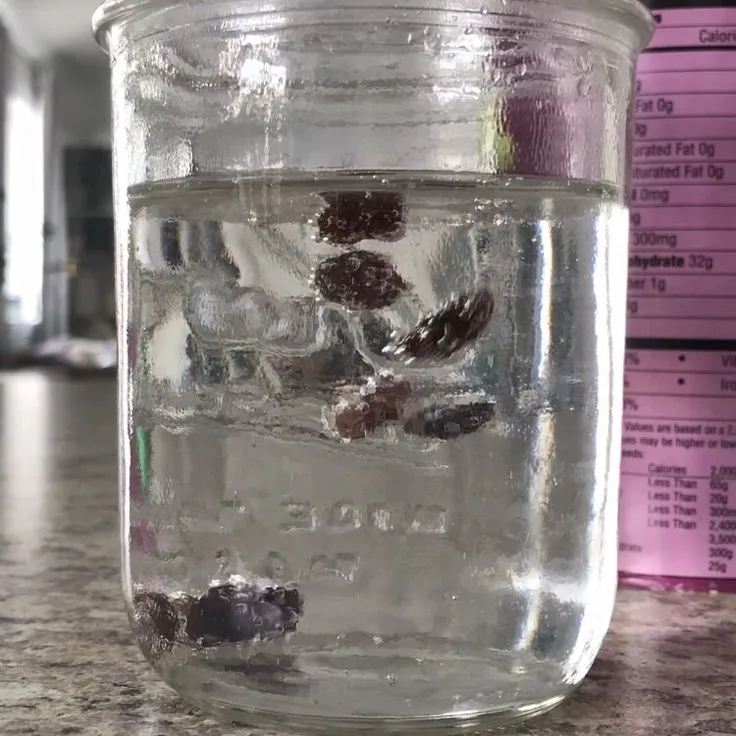
Image Credit: Pinterest
13. Rainbow Milk
Pour some milk into a shallow dish and add drops of different food colors around the edges. Dip a cotton swab in dish soap and gently touch the surface of the milk. Your child will be amazed to see the colors swirl into a rainbow-like pattern!
The dish soap breaks the surface tension of the milk, causing the fat and water to mix and move, which in turn moves the colors.
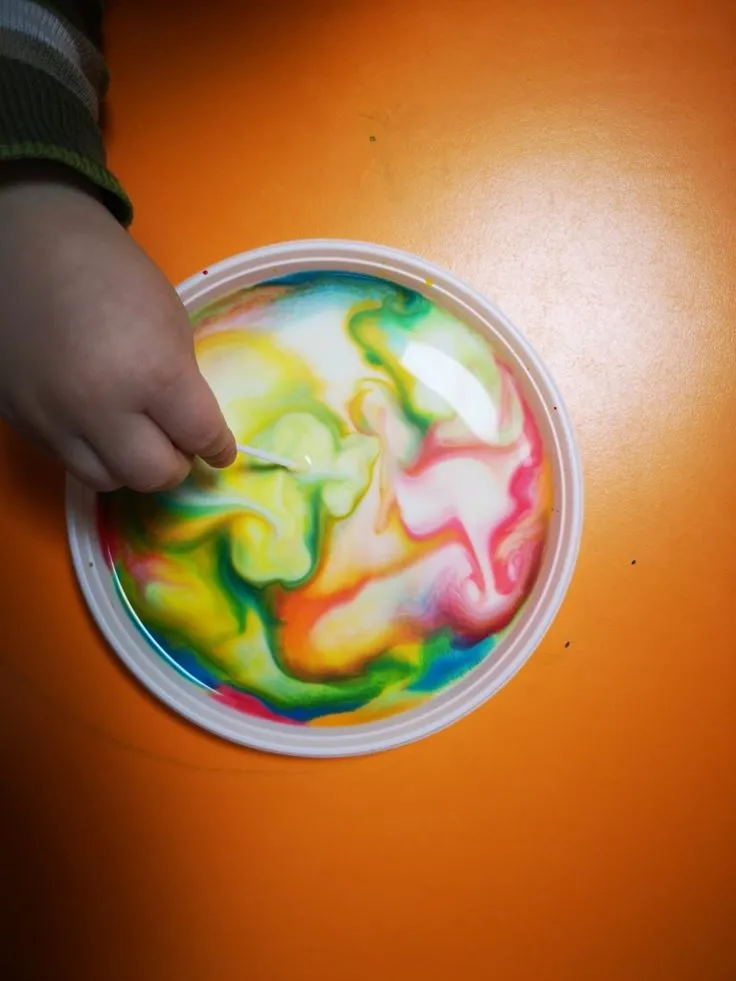
Image Credit: Pinterest
14. Walking Water
Take three glasses and place them side by side. Fill the first and third glasses with water and add food coloring (red in one and blue in the other), leaving the middle one empty. Now, fold paper towels into strips and place them between each glass, touching the water.
Your child will see the water travel through the paper towels and mix colors in the empty glass, creating purple! This happens due to capillary action.
15. Static Electricity Butterfly
Cut a butterfly shape out of tissue paper and lay it flat on a table. Inflate a balloon and rub it on your child’s hair for a few seconds. Then, slowly bring the balloon close to the tissue butterfly. The butterfly will rise and stick to the balloon!
This is because rubbing the balloon creates static electricity, which attracts the lightweight tissue paper.
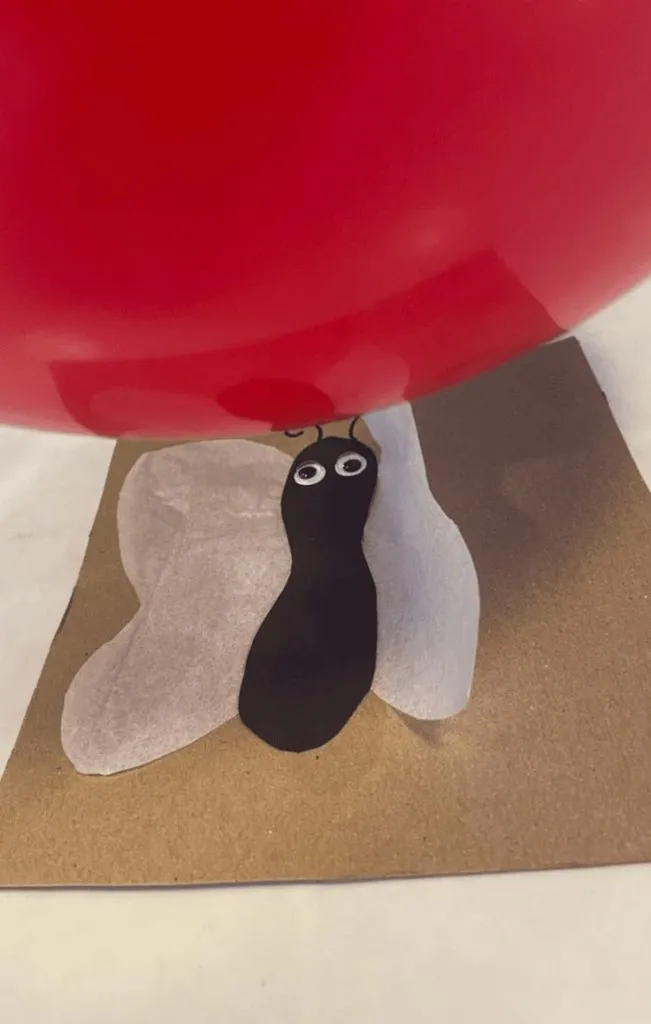
Image Credit: Pinterest
Best Science Experiments for Children
We understand your kid may be entering junior high any time which is why we have covered science experiments for children who are older than kindergarten kids, too. Here are a couple of easy science experiments for kids of older age groups-
1. The Shadow Game
Everyday life provides many opportunities for this fun little game. Ask your child to investigate his shadow and guess where the light source comes from. What happens if he changes the shape of the shadow and takes objects like hula hoops and morphs it into different shapes? What happens if you change the direction the hula hoop is facing or if you move to a different spot outdoors or indoors? Explore this game with a lamp as well.
2. Backyard Detectives
Take your kid out on a detective adventure to the backyard or a park. Ask him to explore different species of plants, bugs, insects, and small-sized animal species. Teach them to observe trees and look for signs of animal life there. Have the leaves been eaten or has the soil been burrowed? Ask questions aloud like, ‘I wonder what the ants eat?’ or ‘I wonder how the caterpillar moves’ will teach you kid about the structures of organisms and how they meet their basic needs. Ask your child to wonder about which animals take shelter where and when they come out. Document these changes and capture outdoor moments on camera every season to make memories and have fun exploring hands-on learning.
3. Playground Science
Take your kid to the playground and ask them to balance themselves on swings or play structures. Ask them to think about what they are doing and how long they are able to maintain balance based on different postures. Tell them to think about what happens when they push harder on the swing and why it happens. Playing on the swings will teach your kids about equal and opposite forces.
4. Weather and Structure Games
When taking your kid on car rides or bus trips, ask him to describe the shapes and number of clouds, whether the sun is visible or not or where light comes from, the differences between manmade structures, and describing what the weather is like. These observations will model their senses and enhance their understanding of their surroundings. Ask your child to reason why the moon follows them at the night and explain to them why that appears to be so but is not.
5. Building Blocks
Take your child to construction sites or places with bricks and stones. Ask him to look closely and notice whether the stone has multiple colors or how they differ in shape and texture. Explain to him how buildings are made and how the materials look and differ in their foundations. What kind of challenges do construction workers face during building constructions and why are the rooftops of houses slanted? These experiences will build your child’s observation skills and awareness of their environments.
6. Kitchen Experiments
The kitchen is a wonderful avenue for developing a sense of measuring and observing how changes take place (foundations of chemistry). Children of this age are curious and want to help out in the kitchen. Let your child do that by encouraging him/her to mix ingredients, play with recipes, and watch how changes occur when two ingredients mix and heat up on the pan. Make scrambled eggs and pancakes in front of your child and allow them to observe how the fire changes the shape and color of the yolk and encourage him/her to describe what he/she is seeing.
7. Colored Flowers
Capillary action is when water flows through small spaces without the help of gravitational pull or external opposing forces. This phenomenon is due to the high surface tension of fluids and it explains how a sponge draws water into it or how hair strands stay wet after a bath even if gravity acts on them. A fun experiment to demonstrate this is to take a bunch of white flowers, trim with angled cuts and place them in a cup of lukewarm water. Add a couple drops of food dye and coloring and let the flowers sit for a few hours, until they begin to change colors. Your kids will be left mind-blown with this experiment.

Image Credit: Pinterest
8. Homemade Slime
Slime ranks at the top of childhood memories and who doesn’t have fond memories of watching Ghost Busters as kids? For this cool little trick, take a 1/4 cup of water, 1/4 cup of white school glue, and add a few drops of food coloring to the mix. Add borax solution to the glue and water and mix. Continue kneading till it results in a texture you like and remove the slime from your bowl or cup and have fun.
9. Paper Airplanes
Teach your kids a little bit about physics and origami by making a paper airplane. Let it fly and bend its corners to demonstrate how the plane changes its flight path.
10. Mentos Fun
This experiment is a little explosive in nature so make sure to stand back when watching it go. For this you need a can of diet coke and a mentos pack. Drop in a mentos (or two) in the can of diet coke can and watch it explode! Older kids absolutely love it!
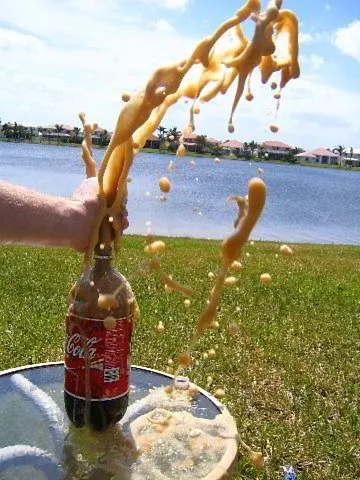
Image Credit: Pinterest
11. Baking Soda Volcano
Create a mini volcano using baking soda and vinegar. Mix baking soda with a little dish soap and food coloring in a container, then pour vinegar over it to see an exciting eruption.
This experiment illustrates an acid-base reaction in a fun and engaging way.
12. Invisible Ink
Let your child become a secret agent by creating invisible ink! Mix equal parts water and lemon juice, and use a cotton swab to write a message on white paper. Once it dries, hold it up to a heat source (like a lamp) to reveal the hidden message. This experiment shows how heat can change the chemical properties of substances.
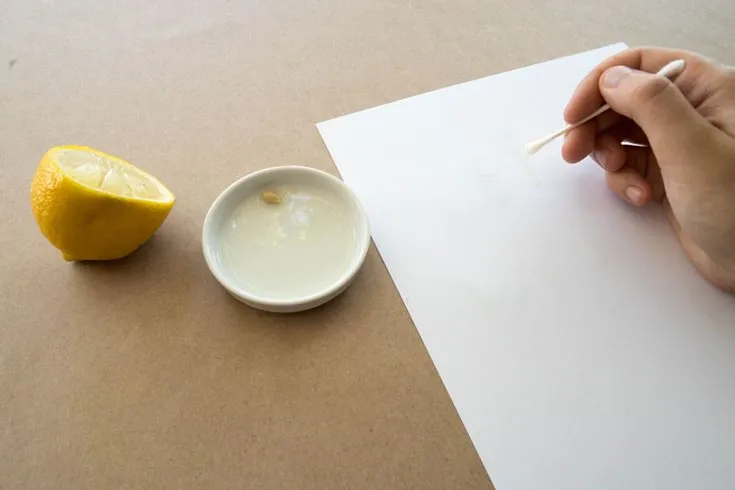
Image Credit: Pinterest
13. Balloon Rocket
Use a balloon, string, and a straw to create a rocket! Thread the string through the straw and anchor it between two points. Inflate the balloon without tying it off and tape it to the straw. When you let go, the air escaping will propel the balloon along the string.
This experiment teaches kids about action and reaction forces.
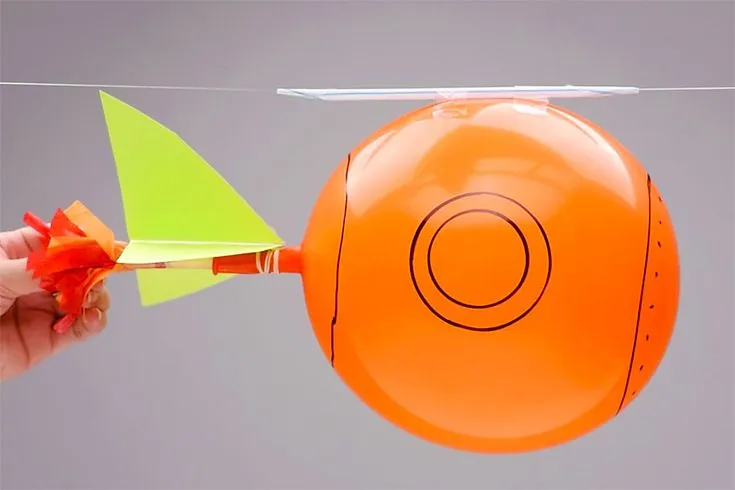
Image Credit: Pinterest
14. Egg in a Bottle
This classic experiment demonstrates air pressure. Hard-boil an egg and peel it. Light a small piece of paper, drop it into a glass bottle, and quickly place the egg on the opening. As the flame goes out, the egg will be sucked into the bottle!
This experiment shows how changes in temperature can affect air pressure.
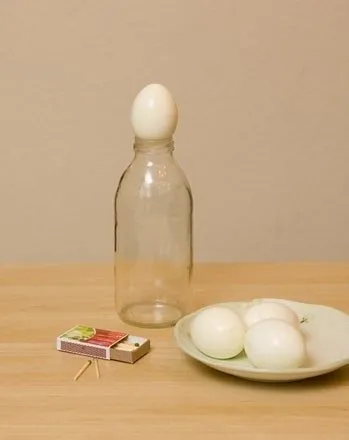
Image Credit: Pinterest
15. Ice Cream in a Bag
Make a delicious treat while learning about the science of freezing! You’ll need a small zip-top bag, ice, salt, and a larger zip-top bag. In the smaller bag, mix 1 cup of heavy cream, 1/2 cup of sugar, and 1 teaspoon of vanilla extract. Seal it tightly. In the larger bag, fill it halfway with ice and add about 1/2 cup of salt. Place the smaller bag inside the larger one, seal it, and shake vigorously for about 5-10 minutes. The salt lowers the freezing point of the ice, allowing the cream mixture to freeze and become ice cream.
This experiment teaches kids about freezing points and the effects of salt on ice! Enjoy the tasty results together.
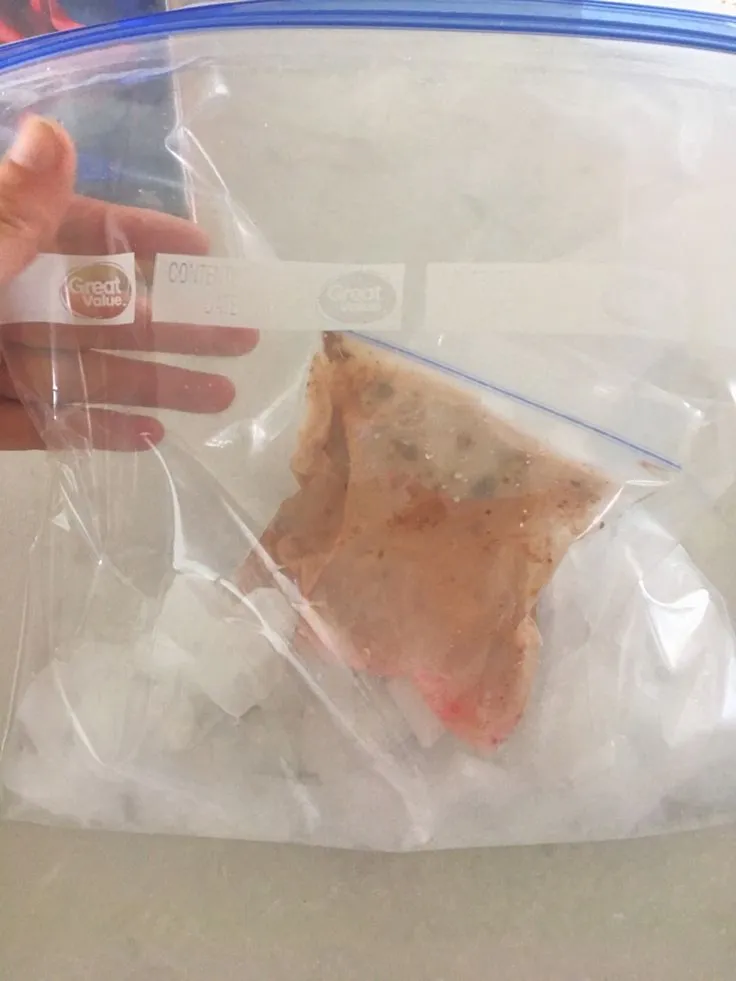
Image Credit: Pinterest
Safety Tips to Remember While Doing Science Experiments
When conducting science experiments, safety should always be a top priority, especially for children. Here are some essential safety tips to ensure a fun and secure experimenting experience:
1. Adult Supervision
Always have an adult present during experiments, especially when using tools or materials that could be dangerous. Adults can provide guidance and support, ensuring that children are following the steps correctly and can offer immediate help if anything goes wrong.
2. Wear Protective Gear
Encourage children to wear protective gear, such as safety goggles, gloves, and aprons. This gear helps keep their eyes safe from splashes, their skin protected from irritants, and their clothes clean from any spills. Remind them that even simple experiments can sometimes be messy!
3. Use Non-toxic Materials
Choose safe, non-toxic materials for experiments, such as vinegar and baking soda, instead of harsh chemicals. Avoid any substances that may be harmful if ingested or inhaled, ensuring a safe environment for children to explore without risk to their health.
4. Read Instructions Carefully
Before starting any experiment, make sure to read all instructions carefully. Understanding the steps, including what tools and materials are needed, helps prevent accidents and ensures the experiment runs smoothly. Discuss any unclear parts with an adult before proceeding.
5. Keep a Clean Workspace
Maintain a tidy work area to avoid accidents and make the experimenting process smoother. Clear away clutter, spills, or distractions, and keep only the materials needed for the experiment nearby. A clean space makes it easier to focus on the task at hand and reduces the chance of slipping or tripping.
6. Handle Tools Safely
Teach children how to use tools and equipment properly, such as scissors or measuring cups. Show them the right way to handle each tool, emphasizing the importance of being careful and taking their time. This helps prevent cuts or injuries and builds their confidence in using tools responsibly.
7. Know Emergency Procedures
Familiarize everyone with emergency procedures, like what to do in case of spills or accidents. Have a first-aid kit nearby and ensure that everyone knows how to contact emergency services if needed. Being prepared can make a big difference in ensuring everyone stays safe during experiments.
8. Dispose of Materials Properly
After the experiment, make sure all materials, especially chemicals or sharp objects, are disposed of safely. Teach children how to clean up after their experiments, reinforcing the idea that it’s important to leave the workspace tidy. Proper disposal helps keep the environment safe for everyone.
FAQs
1. How can I make science experiments more engaging for my child?
To enhance engagement, involve your child in the planning process by letting them choose experiments that interest them. Incorporate storytelling or themes related to their favorite characters or shows. Additionally, use colorful materials and interactive elements, like videos or hands-on activities, to capture their attention.
2. What should I do if an experiment doesn’t go as planned?
If an experiment doesn’t yield the expected results, use it as a teaching opportunity. Discuss with your child what went wrong and why, encouraging them to think critically about the science involved. This process fosters resilience and problem-solving skills, showing that failures can lead to valuable lessons.
3. Can science experiments be conducted outdoors, and what precautions should I take?
Yes, many science experiments can be conducted outdoors, which can add a fun, exploratory element. However, always supervise your child closely, be aware of your surroundings, and ensure the area is safe and clean. Check the weather, avoid experiments in extreme conditions, and remember to respect local wildlife and plant life.
Kids love quenching their curiosity and exploring the marvels of science. At these budding ages, let them explore, have fun, and try out these science experiments and activities for kids at home and outside while you’re at it!
Your kid will definitely think you’re cool and creative and give you props for your taste of adventure with these easy but fun indoor and outdoor science experiments!
References/Resources:
1. Lesson 2.4 – Density and Sinking and Floating; American Chemical Society; https://www.acs.org/education/resources/k-8/inquiryinaction/fifth-grade/substances-have-characteristic-properties/lesson-2-4–density-and-sinking-and-floating.html
2. Science on the Shelves – Soapy Science; University of York; https://www.york.ac.uk/res/sots/activities/soapysci.htm
3. Law of action and reaction; Britannica; https://www.britannica.com/science/law-of-action-and-reaction
4. Air Pressure; National Oceanic and Atmospheric Administration; https://www.noaa.gov/jetstream/atmosphere/air-pressure
5. Torkar. G; Taking notice: Children’s observation skills in nature as a basis for the development of early science education; British Educational Research Association; https://www.bera.ac.uk/blog/taking-notice-childrens-observation-skills-in-nature-as-a-basis-for-the-development-of-early-science-education
6. Static electricity; Britannica; https://www.britannica.com/science/static-electricity
7. Thermal Expansion and Density; College of Earth and Mineral Sciences; https://www.e-education.psu.edu/earth111/node/842
Science Project for Children
Creative Activities for Kids
Amazing Memory Games for Kids
Magnet Experiments and Activities for Kids
Walking Rainbow Water Experiment for Children
Was This Article Helpful?
Parenting is a huge responsibility, for you as a caregiver, but also for us as a parenting content platform. We understand that and take our responsibility of creating credible content seriously. FirstCry Parenting articles are written and published only after extensive research using factually sound references to deliver quality content that is accurate, validated by experts, and completely reliable. To understand how we go about creating content that is credible, read our editorial policy here.





